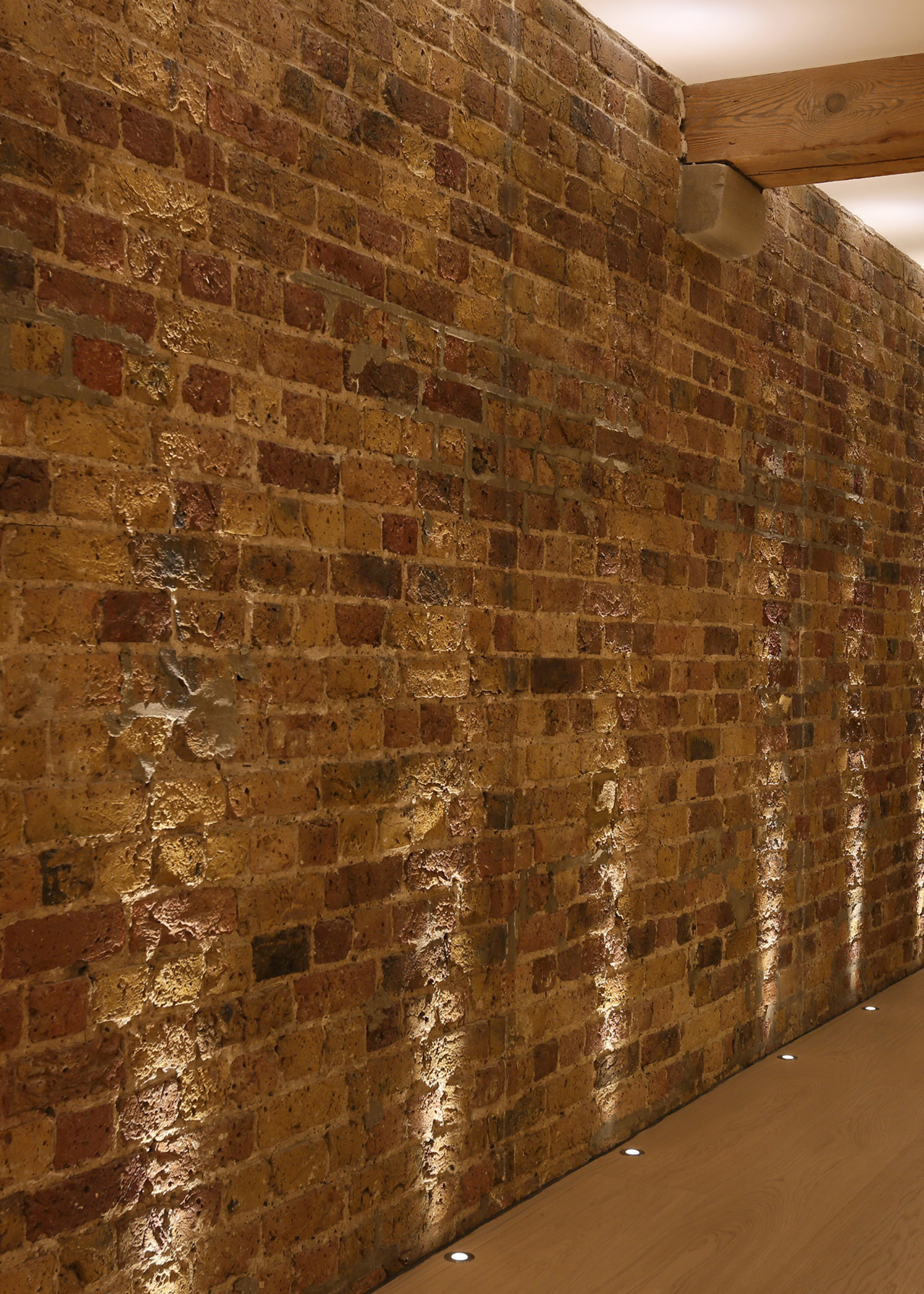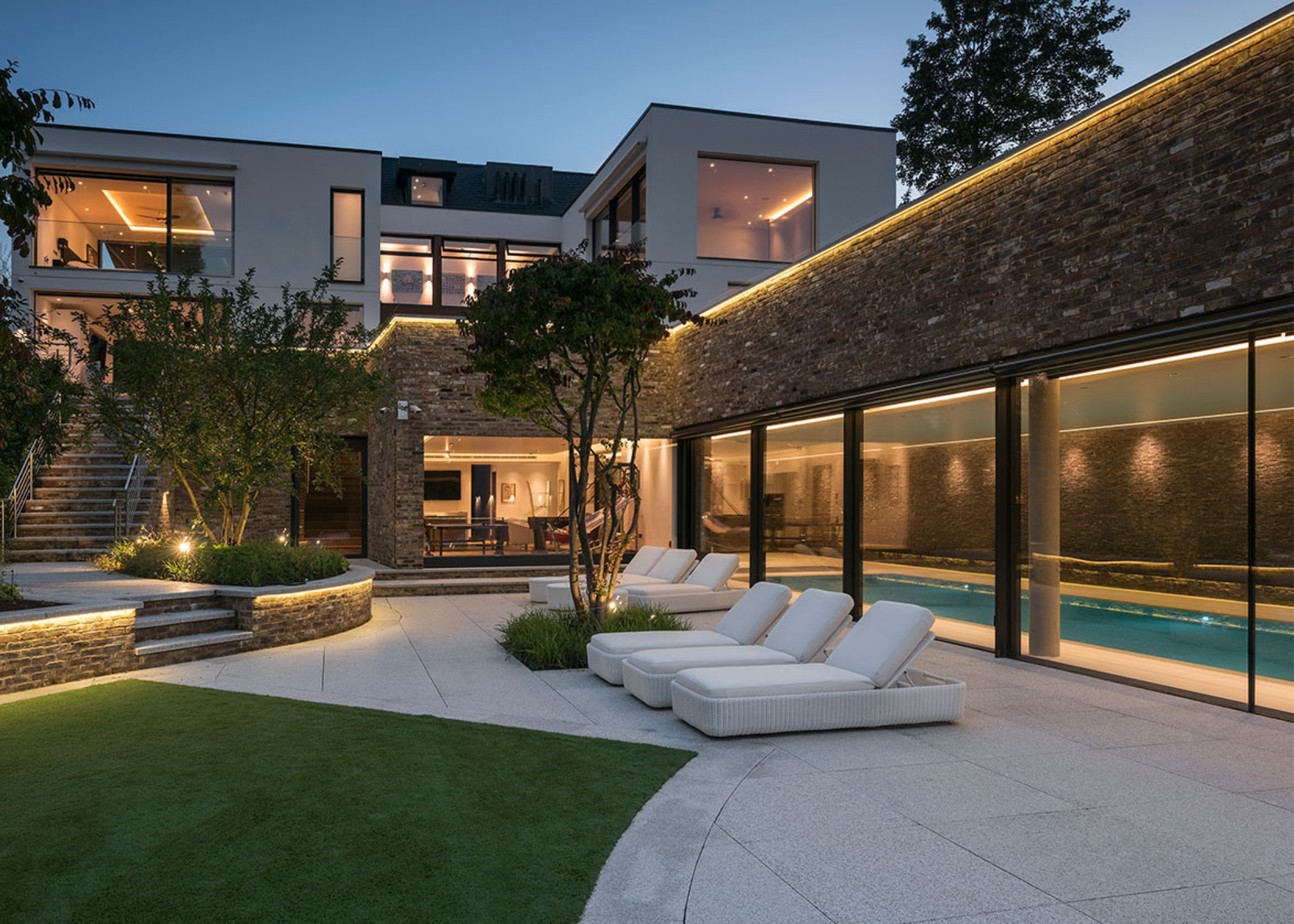
Understanding the impact lighting can have on the look of your home is one of the first steps to levelling up your space from standard to show-stopping. And these two techniques are among the most transformative in the game.
Wall washing and wall grazing are terms you'll hear frequently thrown around when researching accent lighting. When done correctly, they both can bring depth and definition to a room, highlighting specific features or creating the illusion of more space. The trick is knowing which one does what.
I've spent some time chatting to the experts and developing a foolproof guide to understanding these two lighting styles, so you can go ahead and bring the illumination you need back home.
What Is Wall Washing?

Though it may sound like it, wall washing is not a new home cleaning method; it's something far, far better. "Wall washing is a technique that evenly illuminates a wall with a soft, uniform light, typically from top to bottom, covering the entire surface," explains Betty Kajajian of John Cullen Lighting.
Think of it like a wash of color, but with light. It's a soft, illuminating glow, brilliant for creating an inviting, fresh look in your home. As Betty describes it, "Wall washing creates a clean, consistent glow that enhances the overall sense of space and highlights any objects or features on the wall."
This technique uses vertical, indirect lights, placed at even intervals, resulting in a uniform flush of light against a wall.
"Wall washing is all about creating a smooth, even glow across a wall," adds Shenon D'Costa, a lighting designer at Lighting Design Studio. "The idea is to minimize shadows and make the surface look bright and uniform."
This, in effect, can create the illusion of more space, which is great for making small entryways look larger.
What Is Wall Grazing?

Think of wall grazing as the younger sibling of wall washing. It's a more focused, intentional use of light, drawing on the same techniques of wall washing but reinterpreting them to create a slightly different effect.
Betty expands on this, explaining, "Wall grazing is a lighting method that emphasizes texture by casting light close to a wall, creating patterns of light and shadow. This technique accentuates surfaces, revealing details and architectural features in a dramatic and visually engaging way."
While wall washing is an even, flush of light, creating an all-encompassing warmth, wall grazing creates a more dramatic look, handy for showing off any architectural ideas for your home.
"Wall grazing is more dramatic and focuses on highlighting texture and depth. By placing lights very close to the wall so the beam skims across the surface, you can really bring out the details in materials like stone, brick, or wood," says Shenon.
How to Achieve These Looks

So, how do you recreate these two looks?
For the gentle glow of wall washing, it's all about creating a bit more distance from the light source and the surface it's lighting. "Wall washing is achieved by positioning the light fixture further away from the wall so that the beam spreads evenly across the surface," says Betty.
According to the lighting rules, for the most even wash, the wider the beam, the better. Shenon suggests, "Using wide-beam lights placed further back from the wall and spaced evenly, so the light blends together for a soft, seamless effect."
Wall grazing, on the other hand, is about reducing that distance and creating drama through shadows. "Wall grazing is achieved by placing the light source close to the wall, either from above or below. The closer the fixture, the more pronounced the texture and shadow effects become," explains Betty.
Shenon expands on this, saying, "Position narrow-beam fixtures or put LED light strips very close to the wall — usually within about 30 cm — and angle the light so it grazes the surface, creating striking highlights and shadows."
When to Use Wall Washing

Now we get on to the tricky part: deciding which technique you should be using. Ultimately, it will all come down to the specifications of the space you're working with and the effect you're hoping to create.
In small living rooms, wall washing is a great technique to have in your arsenal. As Betty explains, "Wall washing is perfect for extending spaces, as it creates the illusion of height and makes a room feel taller and more spacious. It’s also ideal for galleries, museums, or any space with significant artwork, providing even, consistent illumination across the wall."
If you want to create the perfect gallery wall, consider enhancing its look with wall washing lights, which help emphasize the beautiful art you're decorating with.
Shenon agrees, saying, "Wall washing works well in living rooms, hallways, and galleries — really, anywhere you want to create an open, airy feel. It’s perfect for showcasing artworks, as the uniform lighting enhances visibility and presentation without distracting shadows."
When to Use Wall Grazing

"Wall grazing is perfect for creating a dramatic focal point in a space," says Betty.
While wall washing is all about creating an even, uniform glow, wall grazing instead focuses on highlighting a lack of uniformity. "It’s particularly effective on textured surfaces, feature walls, or architectural details where you want to highlight depth and dimension," Betty says.
It's also a technique that works super effectively as a garden lighting idea, especially against your exterior walls. This is mainly due to the textural variation you tend to find outside, and, as Shenon explains, "Wall grazing is ideal when texture is the focal point."
She expands on this and says, "Think of a stone fireplace, an exposed brick wall, or a textured feature wall — it adds drama and depth, making the surface feel more dynamic and visually engaging."
For Wall Washing
For a nice diffused wash of light, look for wide beam lightbulbs, like these.
These LEDs were designed specifically for the purpose of wall washing. They sit slightly removed from the wall, casting a more encompassing glow.
This smart design emits light from the top and bottom, so your wall can be evenly lit from all angles.
For Wall Grazing
Position small floor lamps near an exterior wall for a wall graze from below.
These flexible LED lights have a smart zig-zag design, allowing for a seamless bend across a corner, ideal for wall grazing an entire room, or outside area.
The team at John Cullen recommends using contour LED strips for wall grazing, and these ones can be controlled via your smartphone.
Now you've got an understanding of these genius lighting techniques, all you need is an idea of the biggest mistakes when planning your lighting that you'll want to avoid, and you're set to go and set to glow, too.







